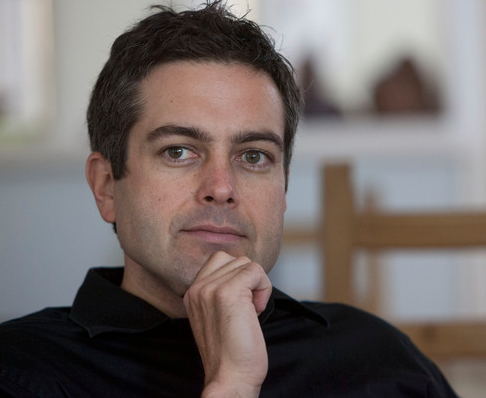Key Pianists presents Jason Hardink in Review
Jason Hardink, piano
Weill Recital Hall at Carnegie Hall, New York, NY
February 26, 2019
Jason Hardink demonstrated why he deserves to be known as a “key” pianist on Tuesday evening to a nearly-full house at Weill Recital Hall. He made the strongest impression in the thorny 20th century works that he has made his calling card: Eckardt, Xenakis, Messiaen. His strengths are: a prodigious memory and uncanny independence of hands and fingers that allows him to create extremes of contrasting sonority, both soft and loud, often simultaneously; he is very musical, and I believed every note he played. I did take issue with a few interpretive choices, which I shall try to elucidate below. By the way, he did create some of the best program notes I have read in many a season—regular readers of New York Concert Review know how passionate I am about program notes.
Mr. Hardink plunged right in with Echoes’ White Veil by Jason Eckardt (b. 1971). This work supposedly inspired him to view “virtuosity” as a door to the sacred, so to speak. The piece, based on a prose poem by W.S. Merwin, is very active, with a few strategic oases of calm. I did not have the score available to study prior to this concert, so I am only reacting to what I heard in the moment. The sheer ferociousness of Mr. Hardink’s commitment translated, often, into ferociousness of keyboard attack, which I felt served this particular music very well. I heard the “bolting of the gates of Thermopylae” as though it was happening right next door, more than anything else.
Mr. Hardink then turned his attention to the hermetic, contemplative “second series” of Images for piano by Debussy. In the first two in particular ( Cloches à travers les feuilles and Et la lune descend sur le temple qui fut), depicting bell-sounds through leaves and moonlight on a former temple, Debussy seems to have almost achieved a state of “musical Nirvana,” that is no longer goal-directed. I say almost because they are not entirely free of human regret and a unique kind of Debussyian pessimism. Here Mr. Hardink’s tonal sensitivity was a pleasure, though for me there can always be more sonorous layers of bells (at the beginning)—most players give up after defining about four of them, Mr. Hardink reached six by my count. Passages marked très en dehors (very brought out) were often minimized. The final movement, Poissons d’or, about a pair of Japanese carp on a black lacquer bowl in Debussy’s possession, though played in the “correct” tempo, seemed jammed, and a bit lacking in elegance and wit.
The first half concluded with Xenakis’ evryali, meaning either “open ocean” or one of the snake-haired Gorgons. This was truly terrifying, and I mean that in the best possible way. The instrument thundered, and the occasional written-out silences only increased the tension. By the way, Mr. Hardink played all these fearsome scores (the whole program in fact) completely from memory.
After intermission, I had more to take issue with. The first group consisted of four of Liszt’s Transcendental Etudes, revised twice from their initial version. Again, Mr. Hardink’s boldness of approach I could accept as legitimate—he plunged headlong into every one of them, with tempi that were quite rapid (though indicated as such). Liszt’s music could have used more expansion, grandeur, and rubato. Sometimes we need to “help” the composer’s music to sound even “better” than it is. Singing lines needed to sing more. Also there was some rather eccentric “post-modern” pedaling instead of the daring mixtures that Liszt requests. The rapidity of execution was impressive (remember, there’s nothing typical audiences love more than speed and volume), but it robbed the discourse of time to blossom, and Feux follets (Will-o’-the-wisps) was technically uneven in the beginning (after the introduction). The famous Harmonies du soir (Evening harmonies) were stripped of their strategic fermatas—amid the welter of notes, there’s always an opportunity for contemplation. The Wilde Jagd became strident and hectic, though I realize the score quite often encourages it.
The concert closed with four of Messiaen’s Vingt regards sur l’Enfant-Jésus – twenty “looks” at the Christ-Child. These complex pieces showcase Messiaen’s celebrated fervent Catholic mysticism, and they are quite sincere, even when, at times, the music sounds a bit like a popular tune with “wrong notes” and all manner of complicated compositional theories attached. They present (appropriately) nearly super-human challenges to any pianist. Mr. Hardink met every one of them, but he was at his radiant best in the final two: Le baiser de l’Enfant-Jésus (The kiss of the Christ-Child: an ecstatic contemplation of a miracle) and Regard de l’Esprit de joie (The look of the spirit of joy) with its near-drunken orgiastic celebration of the holy. There were certain three-note clusters (A-B-flat-B), the last three low notes on the piano, that he played with his fist, a touch that I found unnecessarily rude and inelegant—they could easily be fingered 3-2-1.
I want to emphasize how very impressive this recital was, and how un-routine the programming was. Mr. Hardink’s basic musicality redeemed every selection, even those where I may have mentioned something that stuck out to me; in fact, had the level of excellence not been so high, I might not have noticed the departures from it.
Mr. Hardink excels at a kind of pianism that I would imagine would make him suitable for Boulez and Stockhausen as well, if he is so inclined. At any rate, one doesn’t often hear bravura technique in the service of such committed ideas, so bravo.

